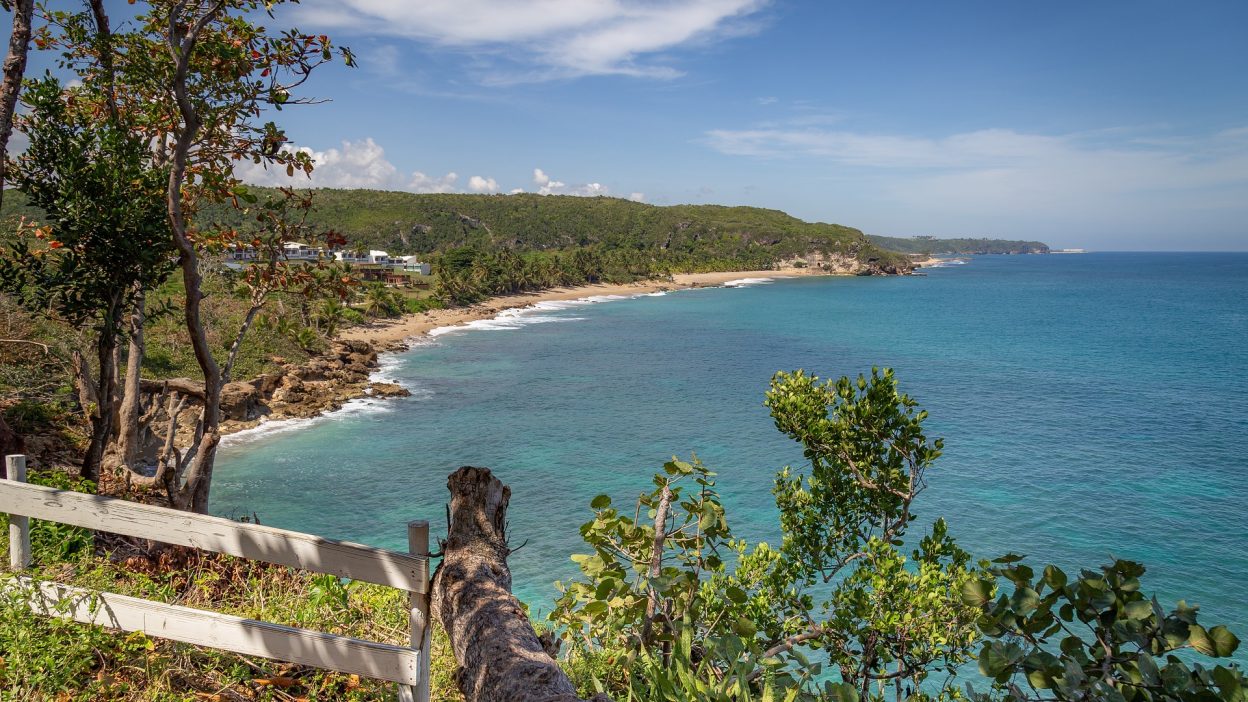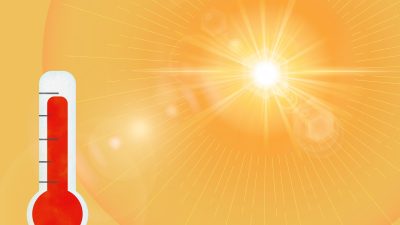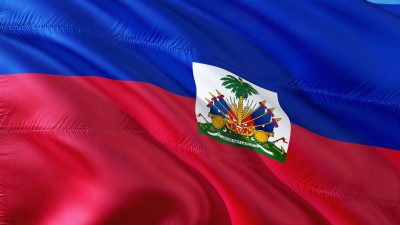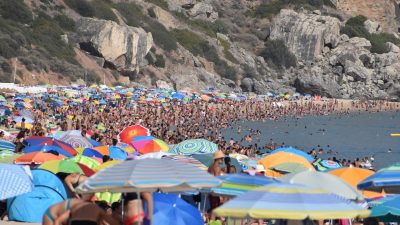The Storm That Devastated Puerto Rico And Dominica
1. The Monster Storm: How Hurricane Maria Became One of the Most Catastrophic Hurricanes in Caribbean History
On 16 September 2017, a tropical disturbance in the Atlantic rapidly intensified into Tropical Storm Maria. Within just 24 hours, the system strengthened into a Category 5 hurricane, with winds reaching a terrifying 175 mph (280 km/h). The National Hurricane Center issued warnings of extreme destruction, but few anticipated the full scale of the catastrophe about to unfold.
On 18 September, Hurricane Maria made its first landfall in Dominica, a small island nation in the Caribbean. The storm’s fierce winds and torrential rains flattened homes, ripped up forests, and turned streets into raging rivers. Just a day later, on 20 September, Maria slammed into Puerto Rico as a Category 4 storm, making it the most powerful hurricane to hit the island in nearly a century. Within hours, the entire island was left without electricity, clean water, or communication, triggering one of the worst humanitarian crises in the region’s history.
2. The Trail of Ruin: How Puerto Rico and Dominica Were Left in Chaos
Hurricane Maria left Puerto Rico and Dominica unrecognisable. The once-thriving cities, towns, and lush green landscapes were transformed into scenes of total destruction.
In Dominica, the storm flattened 90% of the buildings, turning homes, businesses, and schools into rubble. The island’s dense forests were shredded, with uprooted trees and landslides blocking major roads. The capital, Roseau, was left in ruins, and communications were completely wiped out, making it nearly impossible to coordinate rescue efforts.
Puerto Rico, a much larger island, suffered even greater devastation. Floodwaters submerged entire neighbourhoods, leaving families stranded on rooftops, desperately waiting for rescue. The island’s aging power grid collapsed, plunging all 3.4 million residents into darkness. Bridges collapsed, roads disappeared under mudslides, and hospitals were left with no electricity, forcing doctors to perform life-saving procedures under torchlight.
Maria’s aftermath was described as apocalyptic, with food, water, and medical supplies running dangerously low within days. The destruction was so extensive that months later, large portions of the island still looked as if they had just been hit by the storm.
3. The Human Toll: Deaths, Injuries, and the Hidden Casualties of Hurricane Maria
- The Official Death Count vs. The Reality
Initially, Puerto Rico’s government reported only 64 deaths, a figure that was later revised to 2,975 after investigations and pressure from independent researchers. However, further studies estimated that the real death toll could be over 4,600, considering those who died due to lack of access to medical care, food, and clean water. Dominica reported 65 deaths, but many believe the actual number is significantly higher. - The Thousands Who Suffered in Silence
Besides the direct deaths, thousands of injuries went untreated due to the lack of hospitals and medical supplies. Countless people suffered severe wounds, fractures, and infections, with many succumbing to preventable illnesses in the months following the storm. - Uncounted Losses: The People Who Died Long After the Storm Passed
Many victims were never included in the official statistics. Elderly patients in nursing homes perished from dehydration and lack of oxygen when their life-support machines failed. Diabetic patients who relied on refrigerated insulin saw their medication spoil due to the prolonged power outage. The real impact of Hurricane Maria stretched far beyond the reported numbers.
4. The Power Outage That Lasted Nearly a Year: A Humanitarian Disaster Unfolds
Puerto Rico suffered the longest blackout in U.S. history after Maria destroyed over 80% of its power grid. Power stations were completely wiped out, electrical poles were snapped in half, and transmission lines were tangled like spaghetti across the streets.
Hospitals and emergency responders were left without electricity, creating life-threatening conditions for patients who relied on dialysis machines, ventilators, and other critical medical equipment. The failure of the power grid meant millions were left without access to clean water, refrigeration, or air conditioning in the sweltering Caribbean heat.
The power restoration process was shockingly slow. Many residents waited for nearly 11 months before electricity was restored to their homes. Some remote areas remained in darkness for more than a year, relying on candles, makeshift generators, and rainwater collection for survival.
5. Starvation and Disease: Puerto Rico and Dominica’s Fight for Survival
With supply chains cut off, food and clean water became scarcer by the day. Within a week, supermarket shelves were empty, and long queues formed outside the few stores that still had supplies. Relief efforts were severely delayed, leaving thousands to survive on rainwater and whatever food they could salvage.
The shortage of clean drinking water led to a deadly outbreak of leptospirosis, a bacterial infection spread through contaminated floodwaters. Dozens died from preventable diseases, and hospitals struggled to cope with the overwhelming number of patients.
Malnutrition set in as people survived on one meal a day, or less. In some communities, aid didn’t arrive for weeks, leaving residents to fend for themselves in one of the worst humanitarian crises in modern history.
6. U.S. and FEMA’s Failed Response: A Disaster Made Worse by Neglect
The U.S. government’s response to Hurricane Maria was widely condemned as slow, inadequate, and negligent. Despite Puerto Rico being a U.S. territory, it did not receive the same level of federal assistance as states like Texas and Florida, which had been hit by hurricanes just weeks earlier.
FEMA’s disaster response was chaotic and disorganised. Essential supplies were stuck in warehouses due to red tape and logistical failures. Some aid never reached the most affected areas, leaving residents to rely on neighbours and local charities for survival. Many accused the U.S. government of treating Puerto Rico like a foreign country rather than a U.S. territory, highlighting deep-rooted racial and political inequalities.
7. Dominica’s Tragedy: The Island That the World Forgot
- A Country in Ruins
With 90% of structures damaged or destroyed, Dominica was left in a state of total collapse. The capital city, Roseau, was almost completely levelled, and most residents were left homeless overnight. - Why the World Ignored Dominica’s Suffering
While Puerto Rico’s struggles dominated global headlines, Dominica’s devastation was largely overlooked by international media. The small nation struggled to rebuild with minimal global support, relying on regional aid and community resilience.
8. The Political Fallout: Hurricane Maria Exposed the U.S.’s Neglect of Puerto Rico
Hurricane Maria not only left physical destruction in its wake but also exposed deep political and economic inequalities in Puerto Rico’s relationship with the United States. Despite being a U.S. territory, Puerto Rico was treated as if it were a foreign country, receiving significantly less aid and slower recovery efforts than U.S. states hit by hurricanes the same year.
The Trump administration’s response came under intense scrutiny, with many criticising the lack of urgency and inadequate disaster relief efforts. When President Donald Trump visited Puerto Rico in October 2017, his actions sparked outrage—instead of addressing the crisis seriously, he was seen tossing paper towels into a crowd in what many perceived as a disrespectful and dismissive gesture. He also downplayed the severity of the disaster, claiming the official death toll was exaggerated, despite evidence proving otherwise.
Beyond the immediate response, Hurricane Maria also intensified debates about Puerto Rico’s political status. Many saw the lack of proper aid as proof that the island’s lack of statehood made it vulnerable to government neglect. The storm not only left physical scars but also widened political rifts, making many Puerto Ricans question whether remaining a U.S. territory was in their best interest.
9. Could Another Hurricane Maria Happen Again?
Scientists have warned that another Hurricane Maria-level catastrophe is not a question of if, but when. Due to climate change, rising sea levels, and increasing ocean temperatures, hurricanes are becoming stronger, wetter, and more destructive.
Meteorologists have noted that the Atlantic Ocean’s warming waters provide more fuel for hurricanes, allowing them to rapidly intensify, just as Maria did. This means future storms could form faster, grow stronger, and cause even more destruction than those in the past.
Puerto Rico and Dominica remain highly vulnerable due to their geographic location and fragile infrastructure. Without major improvements in disaster preparedness, emergency response, and climate resilience, the next major storm could be just as deadly, if not worse. Governments, aid organisations, and scientists urgently call for stronger measures to prevent another disaster of this scale.
10. A Disaster That Puerto Rico and Dominica Are Still Recovering From
Even years after Hurricane Maria, Puerto Rico and Dominica are still struggling to rebuild. The storm’s impact was so severe that many communities have never fully recovered.
In Puerto Rico, thousands of people remain without stable housing, and the island’s power grid remains unreliable, with frequent blackouts continuing to affect daily life. Many businesses never reopened, forcing residents to leave the island in search of better opportunities. The mass migration that followed weakened Puerto Rico’s economy, creating long-term struggles.
Dominica, a much smaller nation, faced an even more challenging recovery process. With 90% of its buildings destroyed, reconstruction was slow and difficult. The island relied heavily on international aid, but funding was limited, and many residents were left to rebuild their homes and communities on their own.
Hurricane Maria was not just a natural disaster—it was a humanitarian crisis, a political scandal, and a stark warning about the future risks posed by climate change. The scars of Maria remain deep, and the lessons it taught the world must not be ignored.
FAQs
1. What category was Hurricane Maria when it hit Puerto Rico?
Hurricane Maria made landfall in Puerto Rico as a Category 4 hurricane, with sustained winds of 155 mph (250 km/h), just shy of a Category 5 storm.
2. How many people died because of Hurricane Maria?
The official death toll in Puerto Rico was 2,975, but independent studies estimate that over 4,600 people may have died due to lack of medical care, food, and clean water. In Dominica, at least 65 people were reported dead.
3. Why did Puerto Rico experience the longest blackout in U.S. history?
Maria completely destroyed Puerto Rico’s aging power grid, wiping out 80% of transmission lines. The island’s economic struggles and poor infrastructure made recovery slow and difficult, leaving some areas without power for over a year.
4. Did the U.S. government respond effectively to Hurricane Maria?
No. The U.S. government’s response was widely criticised for being slow, disorganised, and inadequate. Puerto Rico received far less federal aid than states like Texas and Florida, which were hit by hurricanes around the same time.
5. Could a hurricane like Maria happen again?
Yes. Due to climate change, hurricanes are becoming stronger and more frequent. Scientists warn that another Maria-level storm could strike the Caribbean in the near future, possibly with even greater intensity.




